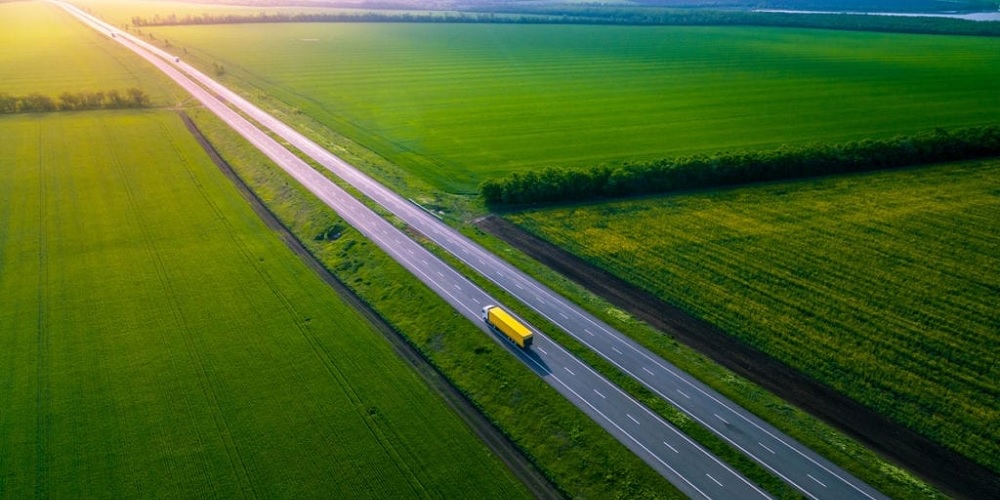Green transportation tips to reduce carbon footprint in municipalities

The carbon emissions of municipal areas have become a serious concern for North American governments. Studies show that the world’s 100 largest metro areas account for nearly one-fifth of global emissions, while urban areas on their own account for 70% of the global carbon footprint.
As carbon-related concerns remain a top priority for municipalities, investing in strategies for green transportation has become a major public initiative. The right solutions can help organizations make better decisions for their fleets, ultimately protecting the people, properties, and environments that they serve.
You can use green transportation to help reduce emissions and manage costs for your organization. By doing so, you can support fleet managers, employees, and your local community.
What is green transportation?
Green transportation refers to any form of human travel that does not negatively impact the environment. This generally includes the use of:
- Electric bikes
- EVs
- Public transportation (especially electric buses)
Green transportation typically requires green fuel sources rather than traditional gas, oil, or petroleum. Common types of renewable fuels include:
- Biodiesel
- Electricity
- Ethanol
- Hydrogen
- Natural gas
- Propane
Many organizations think of green transportation as a vehicle-only initiative. However, there are ways to have green municipal transportation both on and off the road. Apart from EVs and hybrid cars, greening solutions also exist for:
- Maritime decarbonization, including electric boats
- Aviation decarbonization, including sustainable aviation fuel
- Rail decarbonization, including rail propulsion systems
Using green transportation to reduce your municipal carbon footprint
Developing a cleaner, leaner, more sustainable city starts with leaning into green transportation methods.
Here are five ways to use green transportation to reduce your municipal carbon footprint.
1. Consider high-efficiency or alternative fuels
One of the fastest ways to cut fleet emissions is to use alternative fuels. For example, it only costs $1.41 per “gallon” to drive an all-electric EV, making it one of the cheapest forms of fuel that you can purchase for your fleet. You can also lean on compressed natural gas or biodiesel blends, which have a price point similar to conventional fuel and may help keep costs low.
Keep in mind that you can roll your alternative fuel cost savings into other greening initiatives. This maximizes your reach and prepares your organization for additional changes in the future.
2. Rightsize your fleet
Getting rid of excess vehicles or purchasing additional models could slash your agency’s carbon emissions while improving its organizational efficiency.
Each year, rightsizing transportation in the U.S. could save:
- $1 trillion
- 2 billion barrels of oil
- 1 gigaton of carbon emissions
All you need to rightsize your fleet is a relevant fleet monitoring system.
3. Transition to EVs
EVs provide long-lasting value to the municipalities that they serve. Not only do they open the door to sustainable fuels and infrastructure, but they also connect with modern telematics so you can optimize their routes and operation.
Today, major North American metros plan to:
- Have 30% fleet EV ownership by 2035 (Seattle).
- Register 50% new EVs by 2025 (San Francisco).
- Replace at least 10,000 vehicles with EVs (Portland).
- Achieve 5% EV travel by 2025 (Memphis).
- Deploy 900 public charging stations by 2035 (Columbus).
4. Provide better driver education
While it may not be your first consideration in a decarbonizing plan, providing driver education may be a major component of cutting fuel costs and maximizing your impact. As the saying goes, an ounce of prevention is worth a pound of cure. As little as 15 minutes of driving lessons could reduce carbon emissions by up to 15%.
If you don’t want to create an EV driving course internally, you could always contract externally to get much-needed support.
5. Embrace public transportation
Public transportation is essential to a greener, cleaner world. It reduces congestion in busy urban areas and the fuel required to transport large numbers of people.
Studies show that we could prevent the release of 37 million metric tons of CO2 per year by enhancing public transportation. This includes anything from buses and taxis to subways, ferries, and ride-sharing programs.
Relying on Sourcewell to build green transportation systems
It’s clear that green transportation systems aren’t created overnight. Building an efficient and sustainable municipal fleet takes a great deal of time and effort.
But while there’s no easy way to begin the greening process, there are ways to streamline certain elements for a better, cleaner outcome.
These methods include:
- Working alongside Climate Mayors to get inspiration, support, and advice
- Collaborating with the Electrification Coalition to identify policies and legislation that may better serve your municipality
- Partnering with the team at Sourcewell to uncover competitively sourced cooperative contracts
You can browse Sourcewell’s contracts for EV fleets at any time.
See how easy it is to smoothly adhere to any greening initiatives using Sourcewell’s cooperative purchasing program. Streamline the process by choosing from hundreds of suppliers already on contract. Sourcewell’s procurement experts competitively solicit and award contracts on behalf of 50,000 participating agencies in North America. Check out our contracts here.


